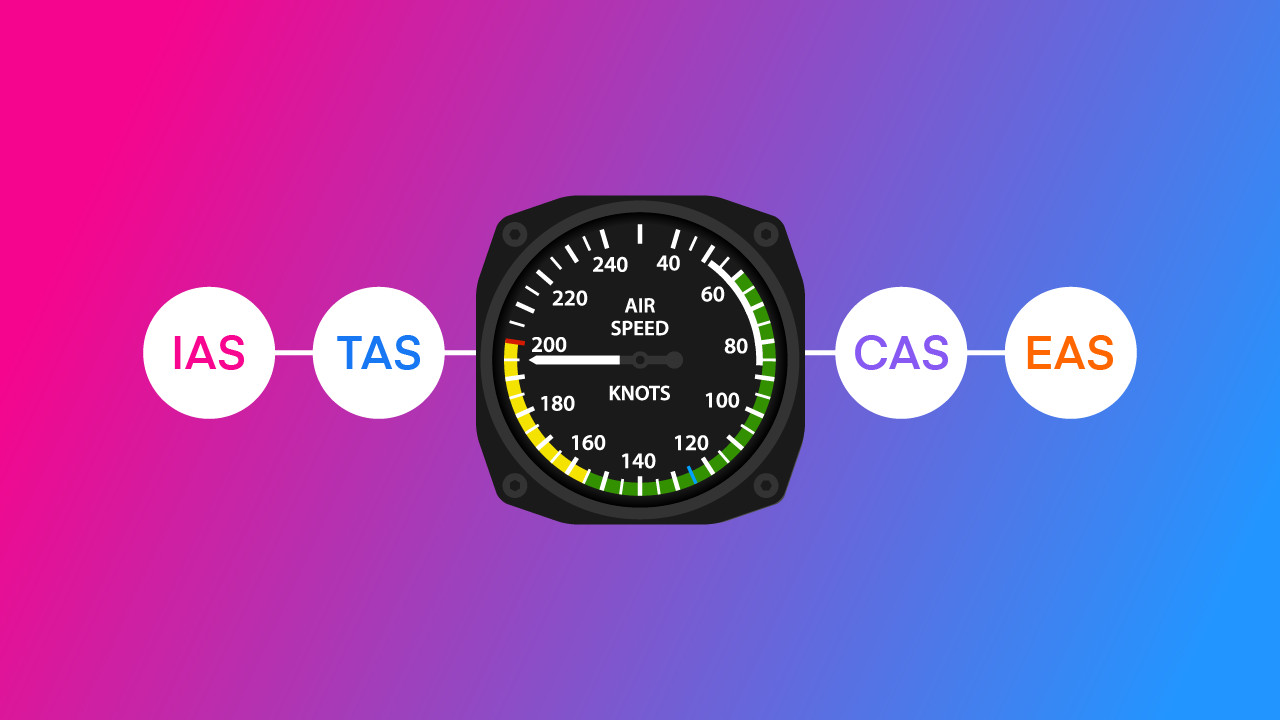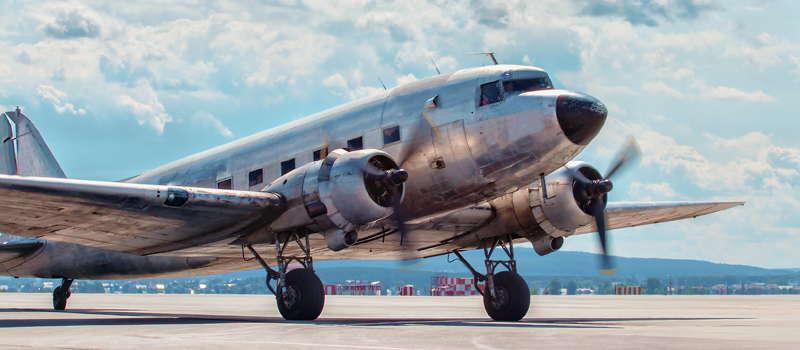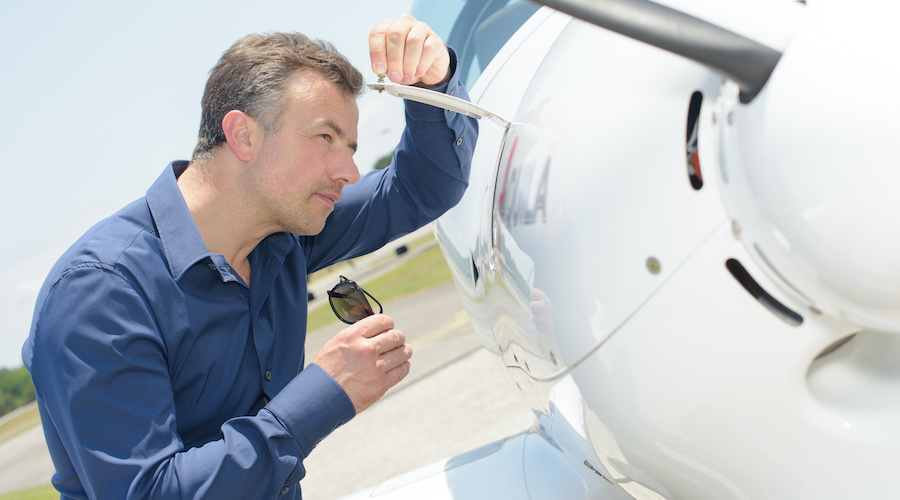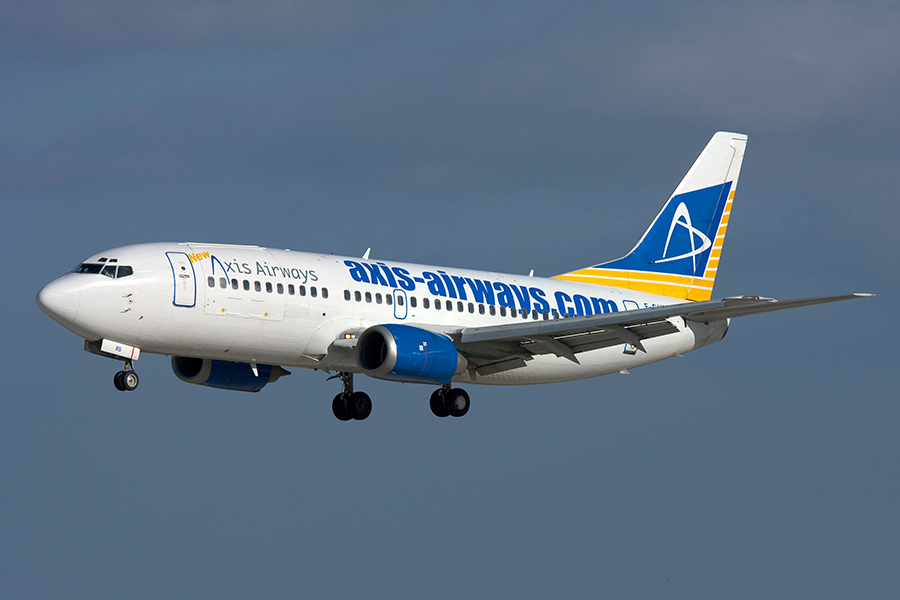Airspeed is one of the most valuable measurements in aviation. Airspeed guides everything from takeoff to landing and every phase in between.
But did you know there are several types of airspeed, each serving a unique purpose? Like Indicated Airspeed (IAS), Calibrated Airspeed (CAS), True Airspeed (TAS), and more!
If you’re navigating at low altitudes or planning a cross-country flight, you’ll need to know how to calculate and interpret these speeds.
Let’s break down the six types of airspeed!
Key Takeaways
- IAS is the uncorrected airspeed shown on the instrument panel.
- CAS and TAS adjust IAS for errors, altitude, and temperature.
- EAS corrects CAS for compressibility at higher speeds.
- Mach compares the aircraft’s speed to the local speed of sound.
What Are The Different Types of Airspeed?
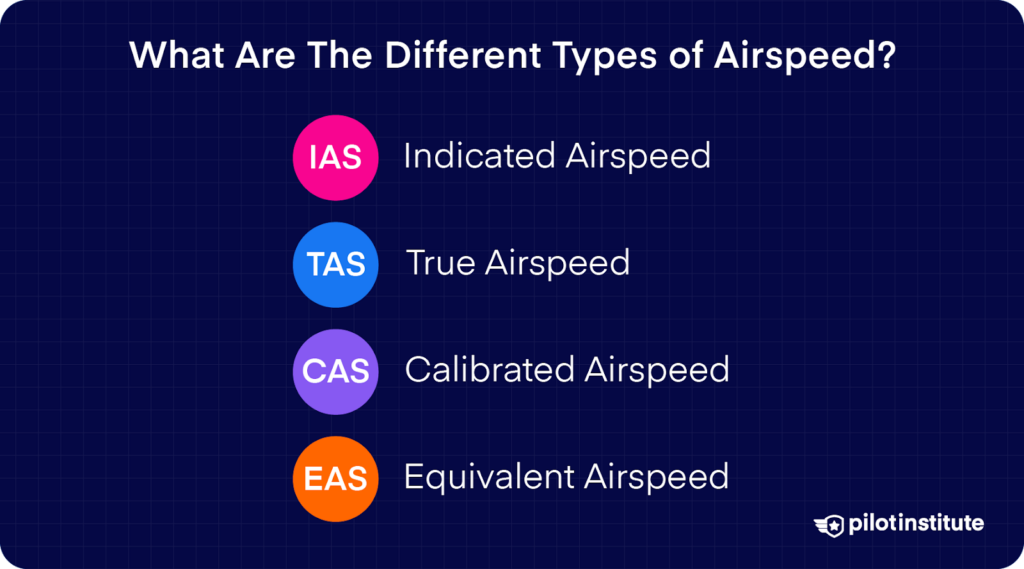
The four types of airspeed are Indicated Airspeed (IAS), Calibrated Airspeed (CAS), True Airspeed (TAS), and Equivalent Airspeed (EAS).
These speed measurements are important for understanding an aircraft’s performance in varying conditions. IAS is a directly measured reading; CAS is a corrected reading of IAS. TAS accounts for altitude and temperature variations, and EAS is CAS corrected for compressibility effects.
What Is IAS vs. TAS vs. GS?
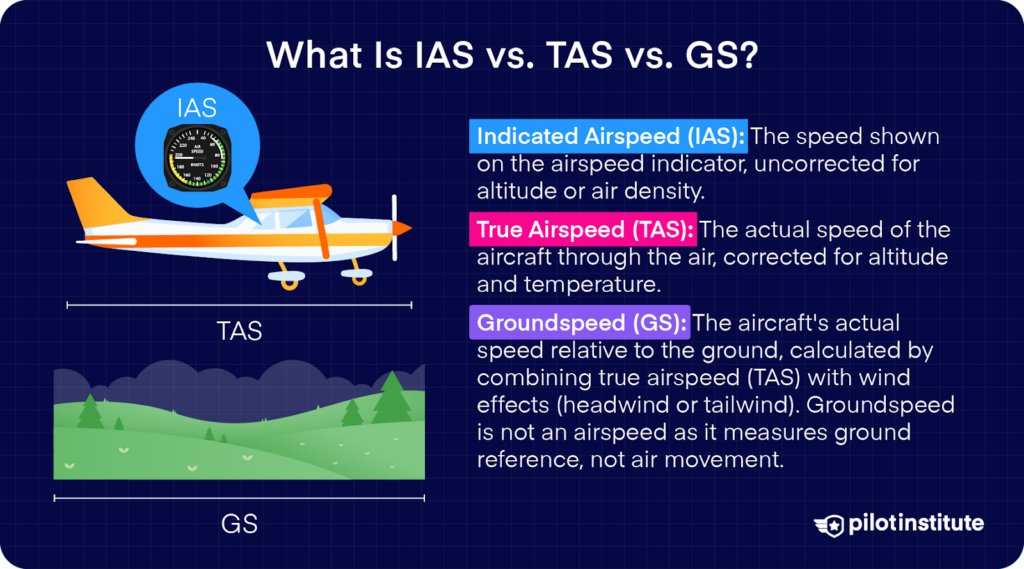
- Indicated Airspeed (IAS): The raw airspeed displayed on the aircraft’s Airspeed Indicator, uncorrected for errors or altitude effects.
- True Airspeed (TAS): IAS corrected for altitude and temperature. It represents the actual speed of the aircraft through the air.
- Ground Speed (GS): TAS adjusted for wind. It’s the speed over the ground, accounting for headwinds or tailwinds.
The 4 Types of Airspeed
1. Indicated Airspeed (IAS)
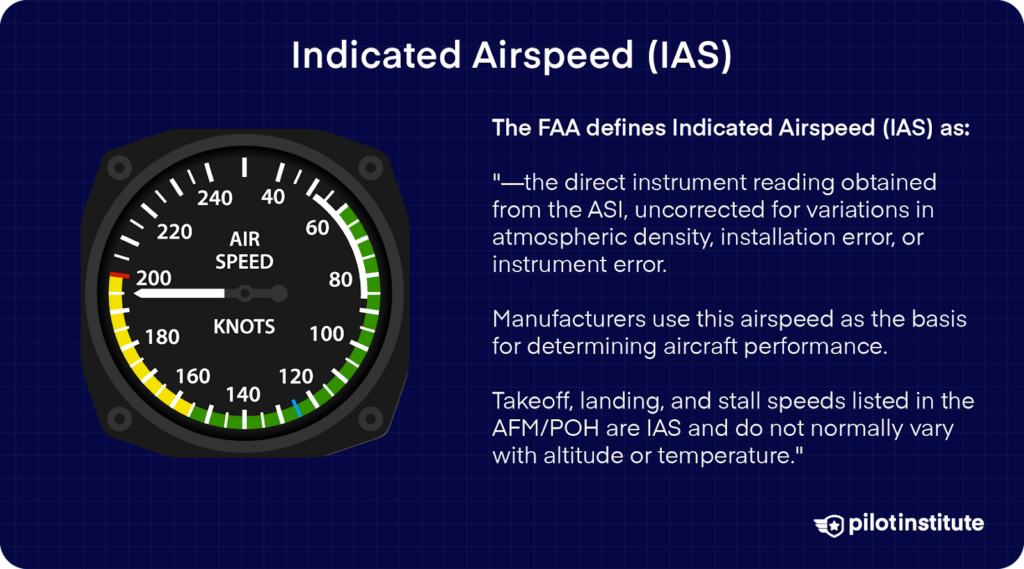
The direct instrument reading obtained from the Airspeed Indicator (ASI), uncorrected for variations in atmospheric density, installation error, or instrument error.
The Airspeed Indicator shows how fast you’re going by comparing two types of air pressure. It measures static pressure from one source and ram pressure from another.This difference is the dynamic pressure, which translates into a reading.
Manufacturers use this airspeed as the basis for determining aircraft performance.
Takeoff, landing, and stall speeds listed in the Aircraft Flight Manual (AFM) / Pilot’s Operating Handbook (POH) are IAS and do not normally vary with altitude or temperature.
2. Calibrated Airspeed (CAS)
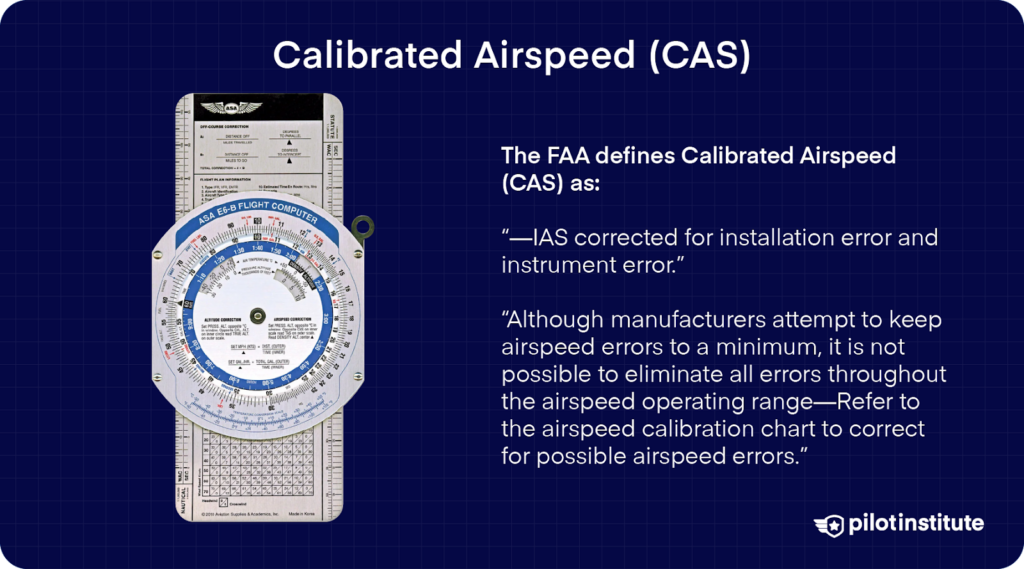
Calibrated Airspeed is Indicated Airspeed (IAS) corrected for installation error and instrument error.
Although manufacturers attempt to keep airspeed errors to a minimum, it is not possible to eliminate all errors throughout the airspeed operating range.
At certain airspeeds and with certain flap settings, the installation and instrument errors may total several knots. This error is generally greatest at low airspeeds.
In the cruising and higher airspeed ranges, IAS and CAS are approximately the same.
You can find the calibrated airspeed for your airplane in the calibration chart of the aircraft manual.
Calibrated airspeed is the same as true airspeed when you are flying at sea level under International Standard Atmosphere (ISA) conditions.
3. True Airspeed (TAS)
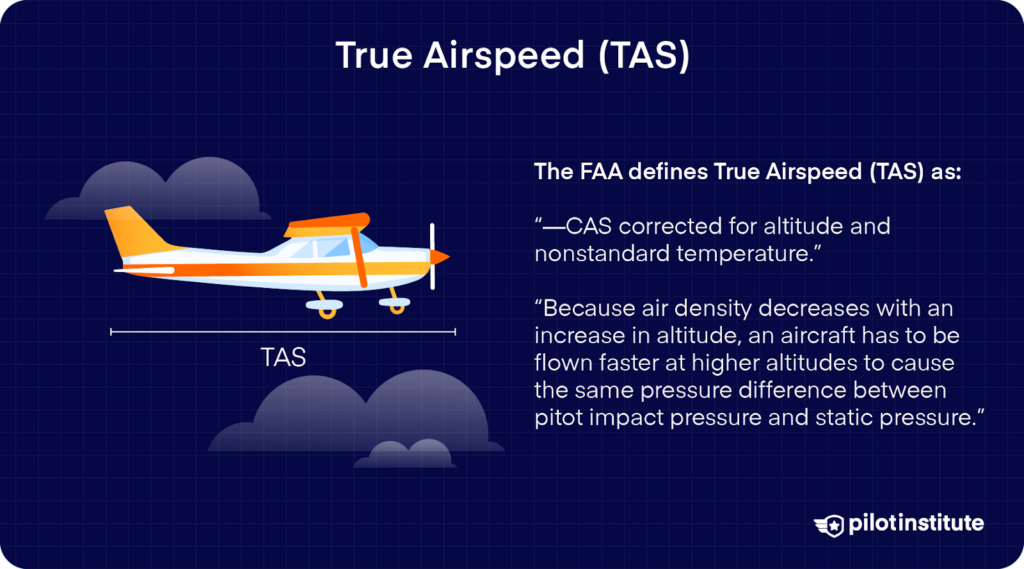
True Airspeed is Calibrated Airspeed (CAS) corrected for altitude and temperature.
Because air density decreases with an increase in altitude, an aircraft has to be flown faster at higher altitudes to cause the same pressure difference between pitot impact pressure and static pressure.
As altitude increases, TAS increases for a given CAS. Similarly, for a given TAS, CAS decreases as you go higher.
A pilot can find TAS by two methods. The most accurate method is to use a conventional or electronic flight computer.
A second method, which is a rule of thumb, provides the approximate TAS. Simply add 2 percent to the CAS for each 1,000 feet of altitude. At 10,000 feet, you fly approximately 20% faster than your indicated airspeed.
The TAS is used for flight planning and when filing a flight plan.
4. Equivalent Airspeed (EAS)
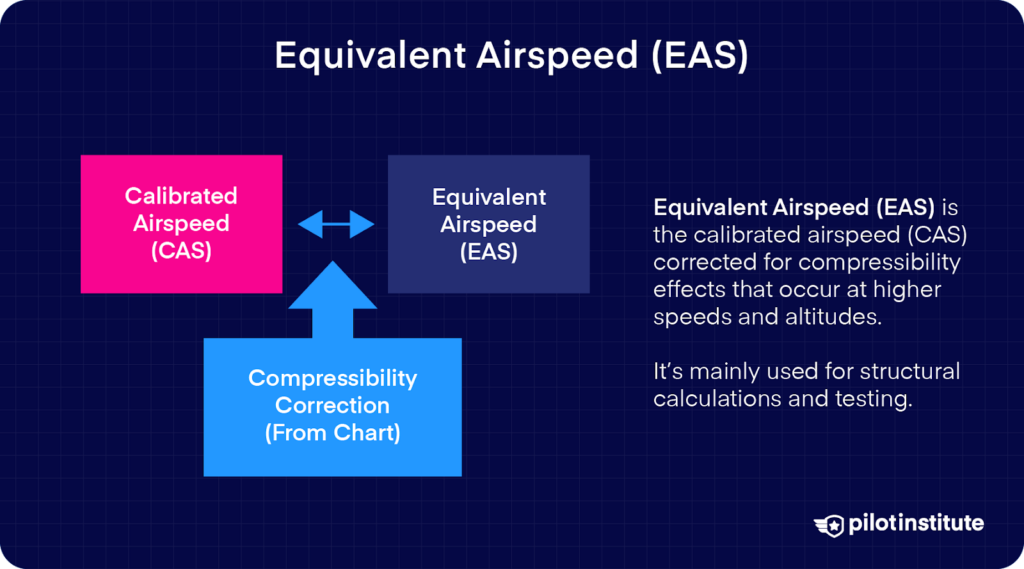
Equivalent Airspeed is Calibrated Airspeed (CAS) corrected for the compressibility of air.
Equivalent Airspeed (EAS) is the calibrated airspeed at sea level in the International Standard Atmosphere (ISA) at which the dynamic pressure is the same as the dynamic pressure at the True Airspeed (TAS) and altitude at which the aircraft is flying.
It’s mainly used for structural calculations and testing.
Additional Aircraft Speed Categories
Ground Speed (GS)
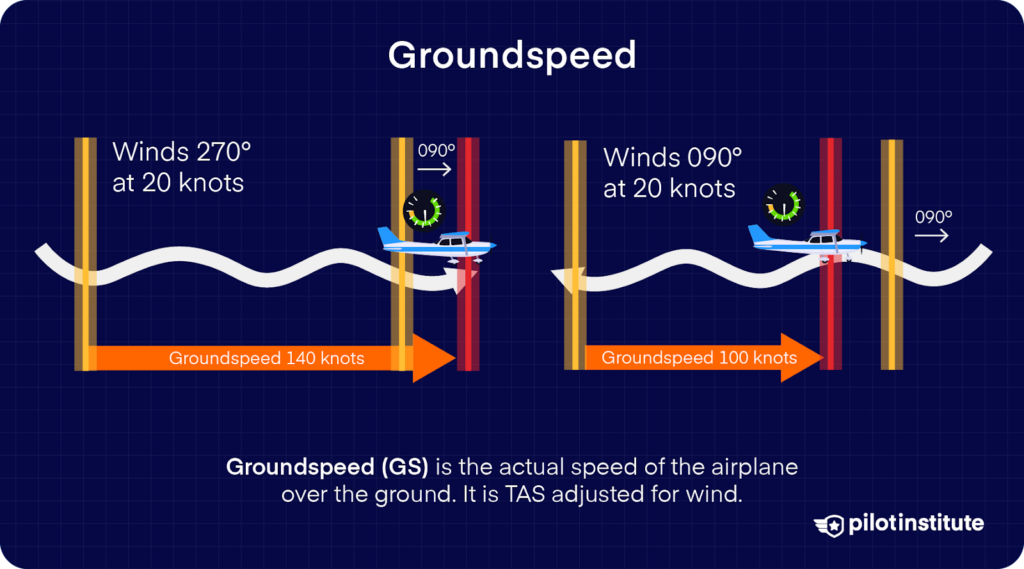
Groundspeed is the actual speed of the airplane over the ground. It is the True Airspeed (TAS) adjusted for wind.
Ground Speed (GS) is the actual speed of the airplane over the ground. It is important for navigation and has a major impact on the time it takes to get to a destination.
GS decreases with a headwind and increases with a tailwind.
Mach Number (M)
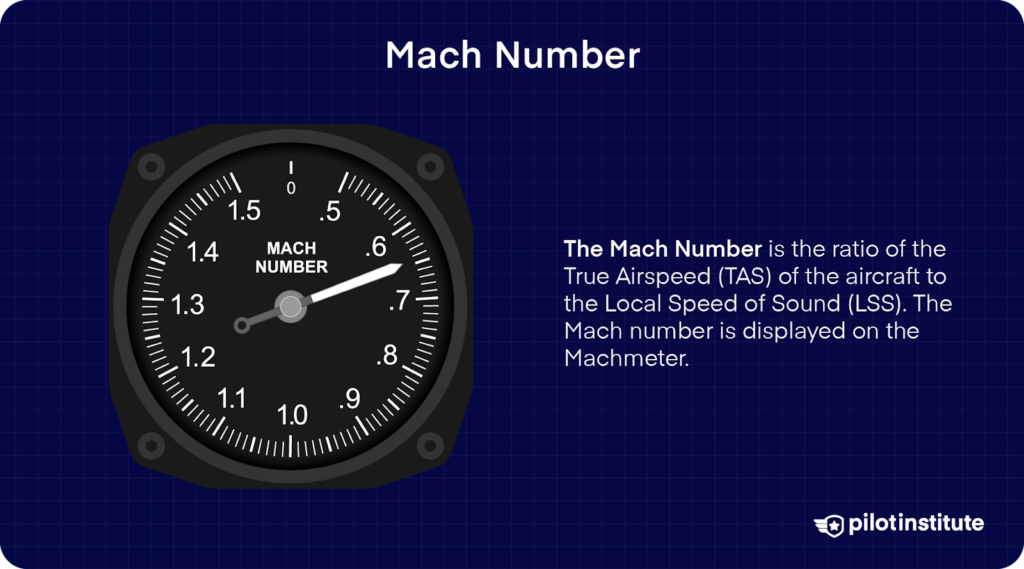
The Mach Number is the ratio of the True Airspeed (TAS) of the aircraft to the Local Speed of Sound (LSS). The Mach number is displayed on the Machmeter.
M varies depending on atmospheric conditions, air temperature, and density.
It’s important for jet aircraft flying at high speeds.
This measurement gets its name from Austrian physicist and philosopher Ernst Mach.
Conclusion
Airspeed gives you the information needed to understand and control your aircraft’s performance throughout every phase of flight.
As you continue your aviation journey, it will become clear just how important it is to know about airspeeds.
Part of being a pilot is more than maneuvering an aircraft; it’s developing an understanding of the forces in our world and nature and how they affect flight.
